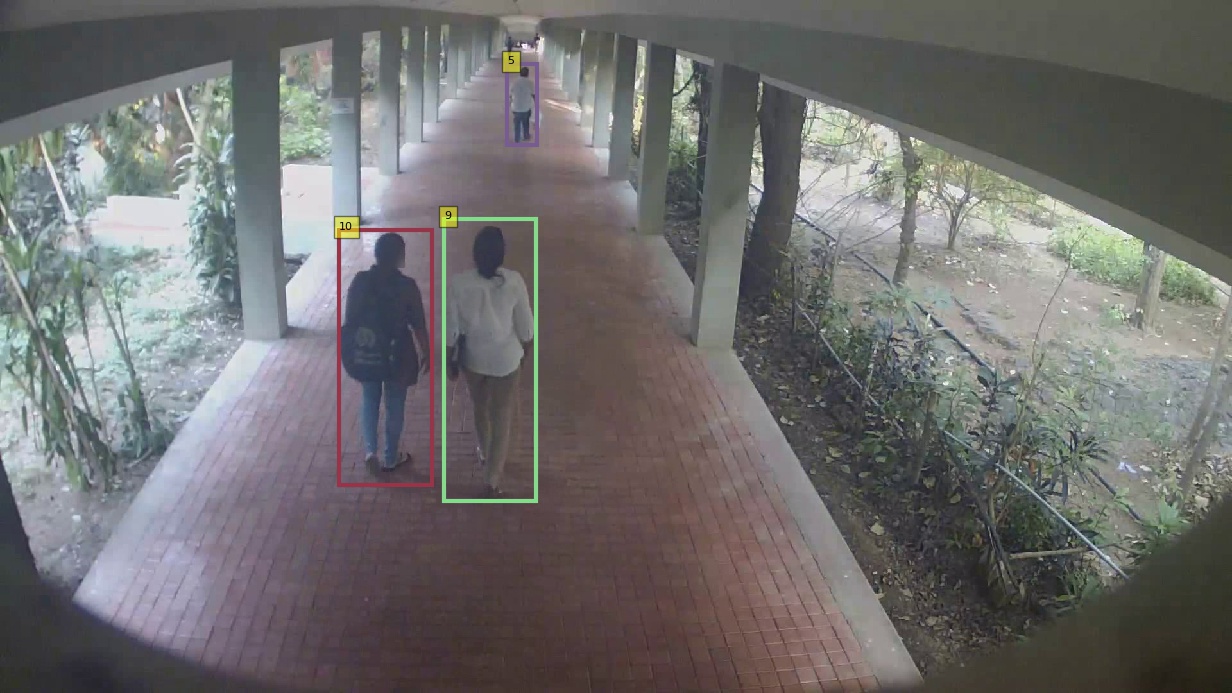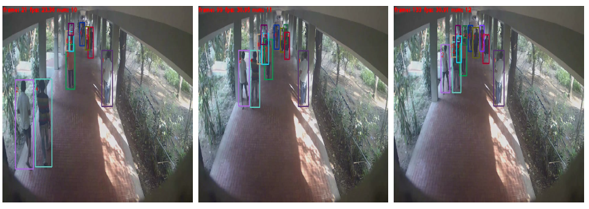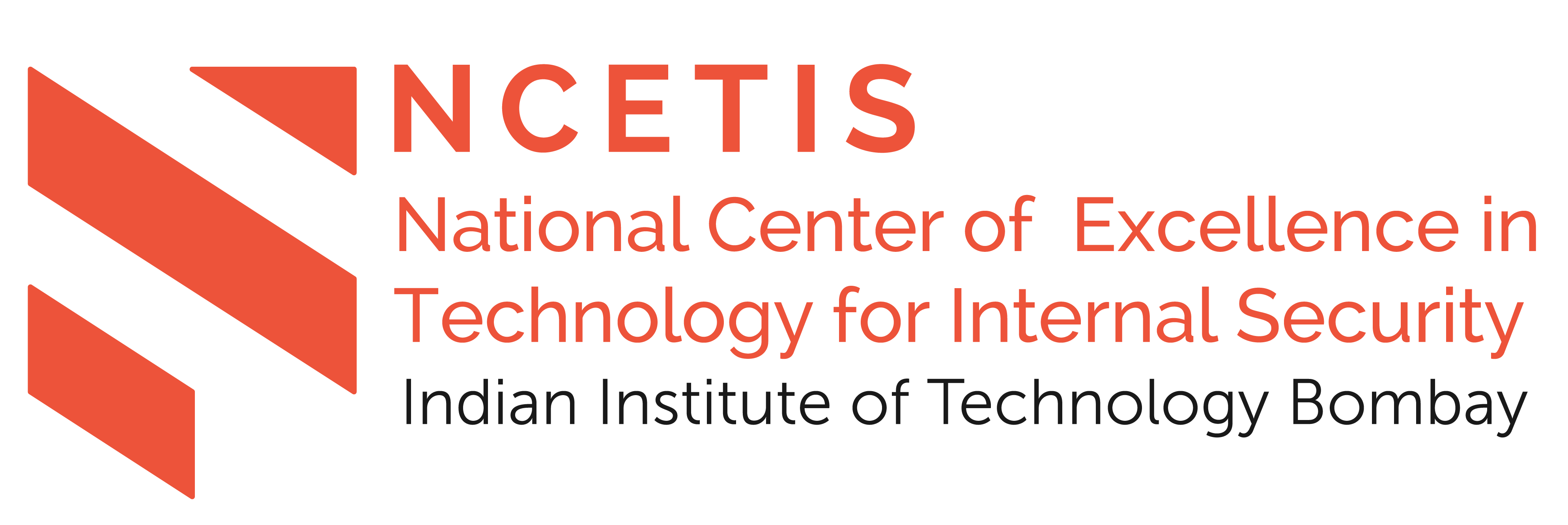Video Analysis for Surveillance
Prof. Rajbabu Velmurugan
Algorithms that analyze surveillance videos and images to draw inferences about a scene or situation using machine learning is being developed. Some applications include Person Re-identification, Abnormal Activity Recognition, Personal-space Violation, and Group Activity Analysis. These algorithms can be integrated with software for video surveillance and analytics.
This group on Video Analysis for Surveillance is working on developing algorithms to analyze surveillance videos and images to draw inferences about a scene or situation. This will make use of video streams from one or multiple cameras to carry out analysis and develop machine learning algorithms that help in surveillance.

Abnormal Activity Analysis
We have developed a single-camera dataset to capture abnormal activities. We refer to this as ‘IITB Corridor datset’ this was recorded considering anomalies that are of interest in surveillance. About 10 video recording (samples) of each anomaly were recorded. The videos recorded are in the range from 20 seconds to 90 seconds. We have developed a multi-timescale deep network to capture the temporal dynamics at different timescales and use this for abnormal activity detection.
More details about this work are here:
Website: https://rodrigues-royston.github.io/Multi-timescale_Trajectory_Prediction/Publication:
• Royston Rodrigues, Neha Bhargava, Rajbabu Velmurugan, and Subhasis Chaudhuri, “Multi-timescale Trajectory Prediction for Abnormal Human Activity Detection,” arXiv:1908.04321 (To appear in WACV 2020).
• A. Goyal, N. Bhargava, R. Velmurugan and S. Chaudhuri, “Hierarchical Deep Network for Group Discovery and Multi-level Activity Recognition”, Proc. ICVGIP (Indian Conference on Computer Vision, Graphics and Image Processing), IIIT Hyderabad, Dec 2018.
We continue to improve these models in ongoing work
.
Person Re-Identification
Person Re-Identification refers to matching pedestrian images across different camera viewpoints. Person Re-Identification becomes challenging due to non-overlapping camera views, changes in a person’s pose and occlusions. We have used Gaussian Of Gaussian (GOG) descriptor for pedestrian feature extraction and Cross-view Quadratic Discriminant Analysis (XQDA) based metric learning for Person Re-Identification. Our image based person Re-Identification (Peron Re-ID) framework was tested on the cameras installed on the IITB main gate pedestrian entry. We are currently working with CDAC-Kolkatta towards software deployment of the developed person Re-ID module. We are looking at video base person re-identification.
Publications:
• T M Feroz Ali, K. Patel, R. Velmurugan and S. Chaudhuri, “Multiple Kernel Fisher Discriminant Metric Learning for Person Re-identification”, Proc. ICVGIP (Indian Conference on Computer Vision, Graphics and Image Processing), IIIT Hyderabad, Dec 2018.
• T M Feroz Ali and Subhasis Chaudhuri, “Maximum Margin Metric Learning Over Discriminative Null space for Person Re-identification”, Proc. ECCV (European Conference on Computer Vision) Munich, September 2018.
• M. Fasil and S. Chaudhuri, “Moving Average Recurrent Neural Network Model for Video-based Person Re-Identification”, Proc. ICVGIP (Indian Conference on Computer Vision, Graphics and Image Processing), IIIT Hyderabad, Dec 2018.
People Tracking
The aim here is to detect people in a video and track them. A detect-and-track approach is used to track multiple people. To do this, the system uses a person detector to periodically detect all the persons in a frame and then initialize a tracker on it for subsequent tracking. We are also working on using multiple camera inputs to track people across cameras.
Publications:
• Neha Bhargava and SubhasisChaudhuri,”MPMF: multi-part multi-feature based object tracking”, Proc. ICVGIP (Indian Conference on Computer Vision, Graphics and Image Processing), Guwahati, Dec 2016.
• Kalyani Deopujari, Rajbabu Velmurugan and Kanchan Tiwari. “Spatial Temporal Weighted Histogram based Mean Shift Target tracking for Illumination Variation Format”, Proc. ICVGIP (Indian Conference on Computer Vision, Graphics and Image Processing), Guwahati, Dec 2016.
• Gargi Phadke and Rajbabu Velmurugan, “Mean LBP and modified fuzzy C-means weighted hybrid feature for illumination invariant mean-shift tracking”, Signal, Image and Video Processing, Nov. 2016.
• Gargi Phadke, Shubham Dawande and Rajbabu Velmurugan, “Non-negative Matrix Factorization based Illumination Robust Mean-shift Tracking”, Proc. NCC (National Conference on Communication), Chennai, March 2017.
Event Geo-Localization
We refer an event to be a concert or a parade which is video recorded by many smartphone cameras at the same time. Event Geo-localization refers to the task of computing 2-D location of the event on the surface of the earth. This is achieved with the help of the sensors, such as digital compass and GPS receivers available in modern smartphones. When multiple smartphone cameras video record the event, we capture this sensor data along with the video and use this auxiliary data (metadata) for event localization. Results on the collected experimental data shows that our approach is computationally very light and can be implemented in real time.
Publications:
• Amit More and Subhasis Chaudhuri, “Event geo-localization and tracking from crowd sourced video metadata”, Proc. ICVGIP (Indian Conference on Computer Vision, Graphics and Image Processing), Guwahati, Dec 2016.
Personal Space Violation
The aim here is to identify personal space violation. The output of this algorithm indicates simple space violations. Result of the initial version of the algorithm is shown. Here, the objective is to identify if intruders approach the person in the center.When such an event happens, a warning is issued.
Publications:
• Neha Bhargava and SubhasisChaudhuri, “Crowd motion analysis for group detection”, Proc. ICVGIP (Indian Conference on Computer Vision, Graphics and Image Processing), Guwahati, Dec 2016.

